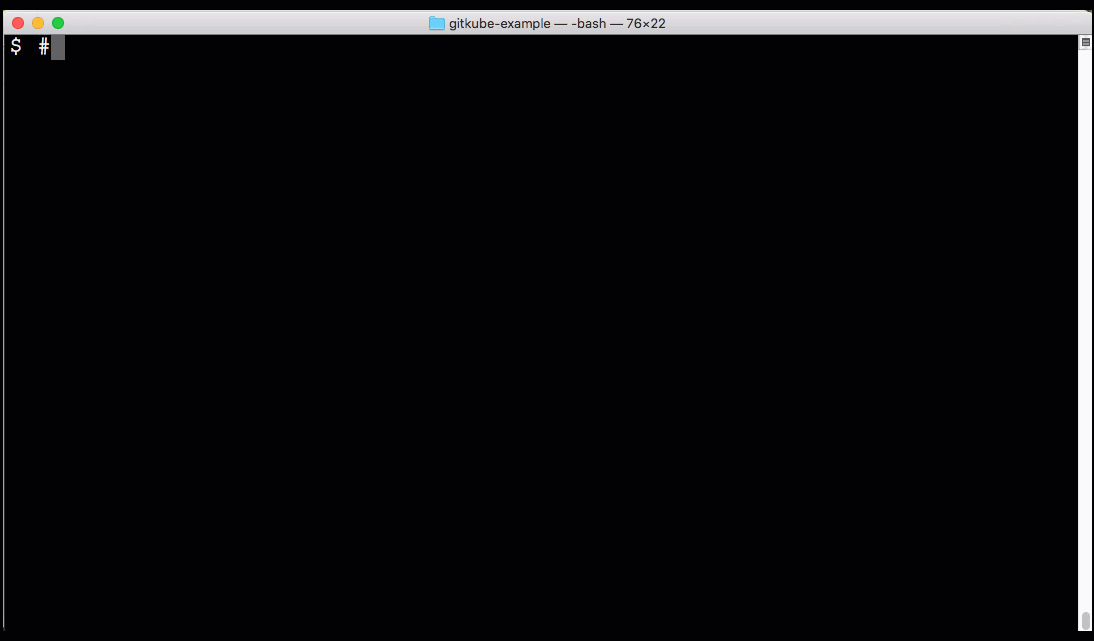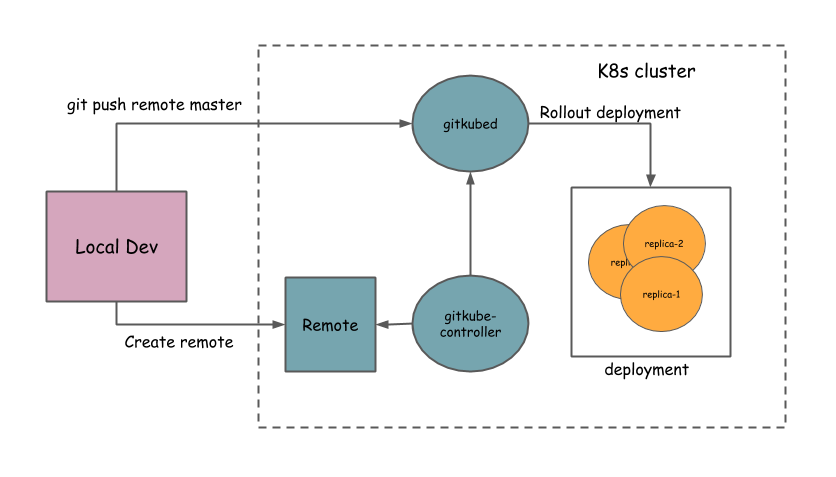Description
Gitkube is a tool for building and deploying docker images on Kubernetes using git push.
After a simple initial setup, users can simply keep git push-ing their repos to build and deploy to Kubernetes automatically.
Gitkube alternatives and similar tools
Based on the "Automation" category.
Alternatively, view Gitkube alternatives based on common mentions on social networks and blogs.
-
The effortless CI/CD framework that runs anywhere
Super simple build framework with fast, repeatable builds and an instantly familiar syntax – like Dockerfile and Makefile had a baby. -
Glazier
A tool for automating the installation of the Microsoft Windows operating system on various device platforms. -
Bolt
You can use Bolt to run one-off tasks, scripts to automate the provisioning and management of some nodes, you can use Bolt to move a step beyond scripts, and make them shareable.
InfluxDB – Built for High-Performance Time Series Workloads

* Code Quality Rankings and insights are calculated and provided by Lumnify.
They vary from L1 to L5 with "L5" being the highest.
Do you think we are missing an alternative of Gitkube or a related project?
Popular Comparisons
README
[Gitkube Logo](artifacts/gitkube-h-w.png)
Gitkube
Gitkube is a tool for building and deploying Docker images on Kubernetes using git push.
After a simple initial setup, users can simply keep git push-ing their repos to build and deploy to Kubernetes automatically.

When should I use gitkube?
- Ideal for development where you can push your WIP branch to the cluster to test.
- Reference implementation for writing git-based automation on your server. Fork this repo and create your own CRD + controller + git remote hook that can do things on the Kubernetes cluster.
Features:
- No dependencies except native tooling (git, kubectl)
- Plug and play installation
- Simple public key based authentication
- RBAC ready - Control access to git remotes using RBAC
- Support for namespace based multi-tenancy - Remotes can only deploy to their own namespace
- No assumptions about repository structure
Getting started
Gitkube will run on any Kubernetes vendor/distribution AS IS. In case you find any difficulties in the setup, please comment on #33
Install gitkube
Using kubectl
kubectl create -f https://raw.githubusercontent.com/hasura/gitkube/master/manifests/gitkube-setup.yaml
#expose gitkubed service
kubectl --namespace kube-system expose deployment gitkubed --type=LoadBalancer --name=gitkubed
Using gitkube CLI (DEPRECATED)
Install Gitkube CLI:
Use Gitkube CLI to install Gitkube on the cluster:
gitkube install
Workflow
- Local dev: User creates a base git repo for the application with Dockerfile and K8s deployment
- Setting Remote: User defines a spec for Remote containing the rules for
git push - Deploying application: Once a Remote is setup, application can be deployed to K8s using
git push <remote> master
Local dev
User should have a git repo with source code and a Dockerfile. User should also create a base K8s deployment for the application.
Setting Remote
A Remote resource consists of 3 parts:
- authorizedKeys: List of ssh-keys for authorizing
git push. - registry: Details of docker registry where images are pushed post-build.
- deployments: Spec for building docker image and updating corresponding K8s deployment.
Here is a typical spec for a Remote:
apiVersion: gitkube.sh/v1alpha1
kind: Remote
metadata:
name: sampleremote
namespace: default
spec:
# Insert ssh-keys for allowing users to git push
authorizedKeys:
- "ssh-rsa your-ssh-public-key"
# Provide registry details: https://github.com/hasura/gitkube/blob/master/docs/registry.md
registry:
url: "docker.io/user"
credentials:
secretRef: regsecret # Name of docker-registry secret
# Define deployment rules
deployments:
- name: www # Name of K8s deployment which is updated on git push
containers:
- name: www # Name of container in the deployment which is built during git push
path: example/www # Docker build context path in the git repo
dockerfile: example/www/Dockerfile # Location of Dockerfile for the source code
Deploying application
Once a Remote is created, it gets a git remote URL which you can find in its status spec
$ kubectl get remote sampleremote -o yaml
...
status:
remoteUrl: ssh://[email protected]/~/git/default-sampleremote
remoteUrlDesc: ""
Add the generated remoteUrl in git
$ git remote add sampleremote ssh://[email protected]/~/git/default-sampleremote
And finally, git push
$ git push sampleremote master
More examples
Follow this example repo for more workflows with gitkube.
How it works
Gitkube has three components:
- Remote: Custom resource defined by a K8s CRD
- gitkube-controller: Controller that manages Remote objects and propogates changes to gitkubed
- gitkubed: Git host that builds docker image from the repo and rolls out deployment
High-level architecture

Contributing
Gitkube is an open source project licensed under Apache License 2.0
Contributions are welcome.
Community and Support
Join the Gitkube channel in the Kubernetes Slack group
Maintainers
This project has come out of the work at hasura.io. Current maintainers @Tirumarai, @shahidh_k.
Follow @gitkube to stay updated.
Gitkube logo concept and design by Samudra Gupta.
*Note that all licence references and agreements mentioned in the Gitkube README section above
are relevant to that project's source code only.

